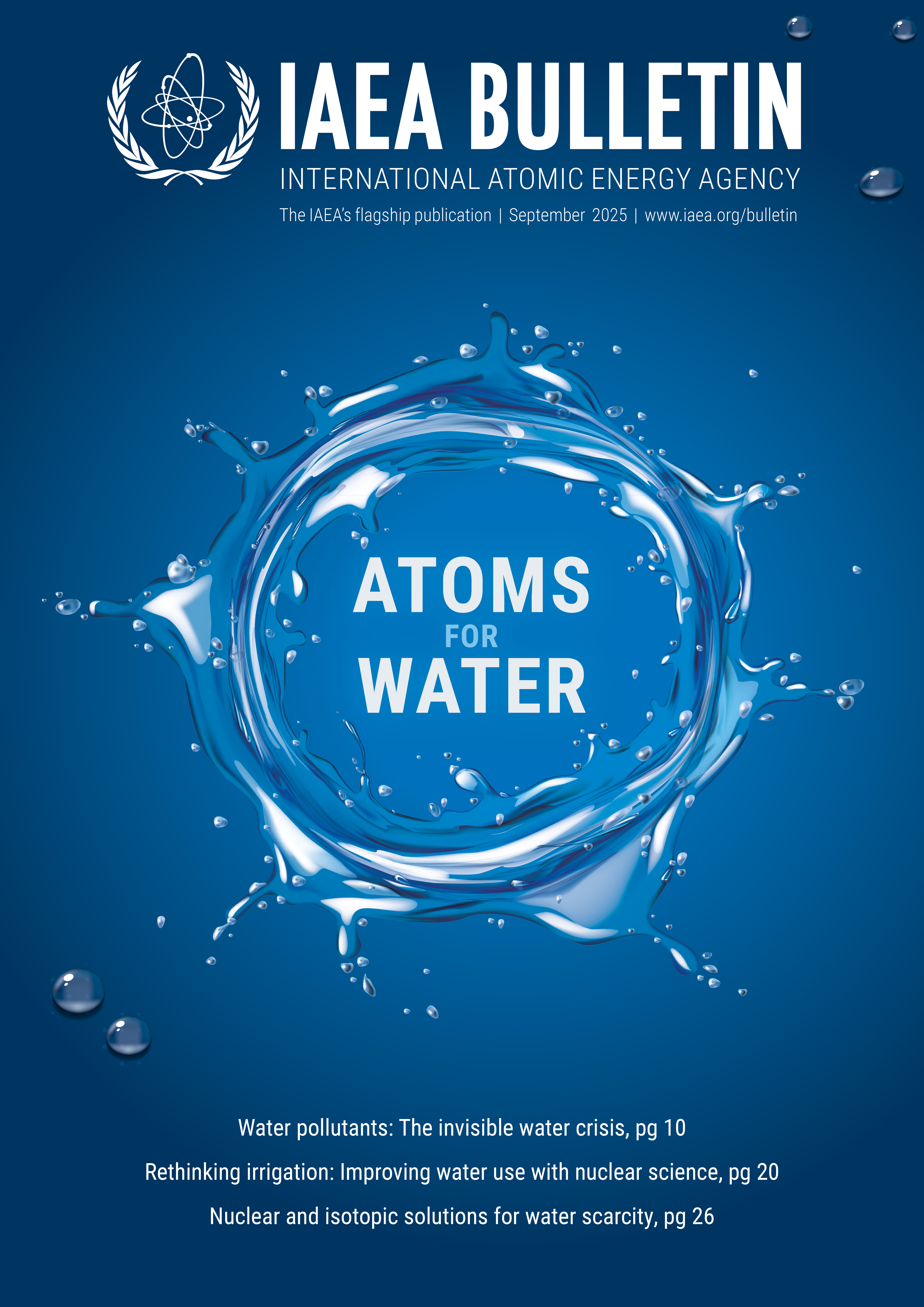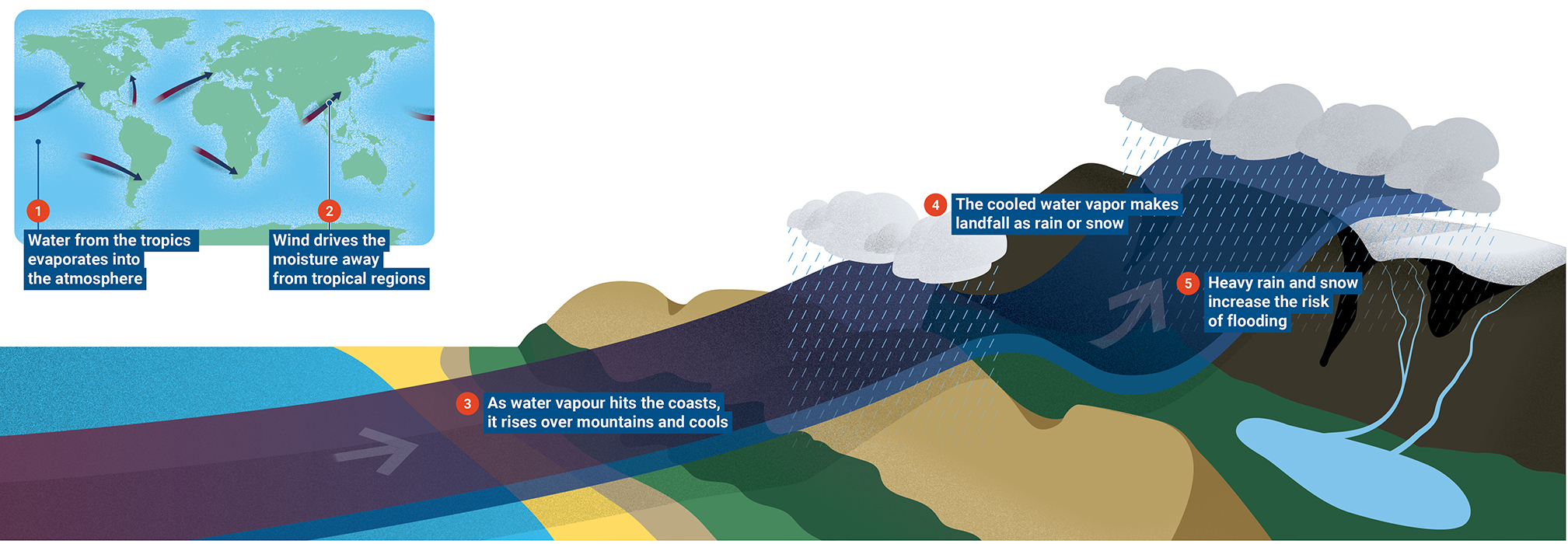“Atmospheric rivers are highly variable year to year, making it difficult to predict how much rain we’ll get each year,” said Kalansky. “This unpredictability of seasonal precipitation poses major challenges for managing water supplies.”
Scientists are using stable isotopes — non-radioactive forms of atoms — to study how climate change impacts atmospheric rivers. The techniques trace where water vapour comes from, how far it has travelled through the atmosphere, where it falls as precipitation and how it interacts with the water cycle. This information can be used to anticipate extreme weather events and reduce their impact, identify flooding risks and manage water resources, especially during drought.
A new IAEA coordinated research project is integrating isotope tracers into hydrological and climate models to track and simulate how different forms of water move and change throughout the water cycle.
“The data we will gather through the research project can help assess the increasing risks of flooding, droughts and water scarcity,” said Jodie Miller, Head of the IAEA’s Isotope Hydrology Section. “It can also help countries develop strategies to mitigate risks, improve water management and enhance climate resilience.”
“We are using data on water vapour isotopes to improve the accuracy of weather forecasts,” said Kei Yoshimura, a professor at the Institute of Industrial Science at the University of Tokyo, who is participating in the project. “Especially useful in mid-latitudes, isotopic data will help better predict moisture transport and rainfall patterns linked to atmospheric rivers.”
The project draws on 65 years of data from the Global Network for Isotopes in Precipitation (GNIP), which tracks precipitation at over 1000 monitoring stations worldwide. GNIP data can be used to analyse the origin, pathways and precipitation patterns of atmospheric rivers, offering insights into their changing behaviour in a warming climate.

